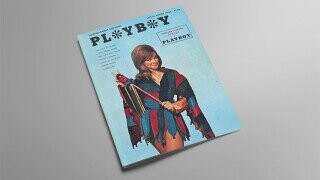The ‘Playboy’ Parody That Launched the ‘National Lampoon’

Older comedy nerds likely believe that 1970s counterculture humor magazine The National Lampoon, the publication that spawned Saturday Night Live, Animal House and Vacation, grew out of The Harvard Lampoon, a campus mag staffed by many of the comic masterminds behind all of those movies. The nerds aren’t wrong — not exactly anyway — but what really launched the national version of the humor magazine was a one-off parody that flew off the store shelves.
Click right here to get the best of Cracked sent to your inbox.
It all began in 1965 when Harvard student Walker Lewis became Lampoon president, according to Josh Karp’s A Futile and Stupid Gesture: How Doug Kenney and National Lampoon Changed Comedy Forever. More of a business guy than a funny one, Lewis realized that the college magazine was losing money due to declining sales and a nonexistent business plan. Soon, he was looking to create special issues that might generate some excitement.
Don't Miss
Although the Lampoon wasn’t selling well on campus, another magazine was: Playboy. The men’s lifestyle periodical with the bare centerfolds seemed ripe for parody. Lewis checked in with an attorney who sat on the Lampoon board and assessed the risks. What was the worst thing that could happen if the Harvard gang attempted a jokey version of Playboy?
The lawyer’s response: “You’ll get some publicity.”
Lewis fired off a letter to Playboy informing its team about the upcoming fake issue. Hugh Hefner and his legal squad threatened a lawsuit if such a goof actually hit newsstands, but that didn’t stop Lewis, who told Playboy that the Lampoon would welcome all of the publicity such an action would create. Somehow, that convinced the centerfold sellers to get on board, offering to help the college kids and even introducing them to the specialty printer that created their full-figured foldouts.
Pl*yb*y, nearly 100 pages mocking Playboy complete with 20 pages of actual ads, hit the newsstands soon thereafter. The parody did its take on the Playboy Interview, holding a conversation with special guest Magic 8 Ball who responded with answers like “Ask Again Later, Reply Hazy,” and there were Lampoon versions of the Playboy Advisor and Playboy Party Jokes. It probably didn’t hurt that the satire also featured actual nudes.
At a buck an issue, the Harvard Lampoon’s version of Playboy sold out its run of 500,000 copies after a mere five days on the newsstand. Additional printings were rushed to stores (and at a higher price — my used copy upped the cover cost to an even more profitable $1.25). The success not only put about $150,000 into the college kids’ pockets but enticed young American readers to subscribe to the Harvard Lampoon as well.
More parodies followed — a Time magazine rip-off with another scantily clad model on the cover earned $250,000 for Harvard Lampoon — convincing its staff (and publishers) that a National version of the Lampoon might just be profitable for all involved.